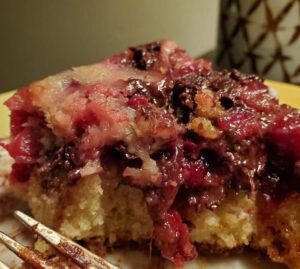A few months ago I had the sudden insight that no one ever gets a break. And I don’t mean that we don’t get a break from work or from parenting or from doing things, it’s that we literally don’t get a break in consciousness. We get no rest from time moving on and from things happening. Yes, sleep, kind of, because we don’t have to be aware and participating while we’re asleep. But not really, because the whole point of a break would be that we could know that things were happening for other people but we were free entirely of obligations even to have thoughts and ideas. Like, we’d exist but not in relation to anything else.
Does that make sense? I never took a philosophy class in undergrad, so maybe this is a thought from the third week of a 101 class, but: Things Are Always Happening and we’re always conscious and we can’t just take fifteen minutes or a couple of hours of doing nothing to catch up.
I know I’m not the only one who’s totally ground to a halt this week. I spent Monday and Tuesday doing exactly nothing but reading romance novels and ignoring everything that was supposed to happen in my life. So now it’s stacked up and I’m behind and trying to catch up.
I’m also in pain. Every part of my body just hurts, very weirdly. Do I have covid, is it some other virus, am I doing or eating something that makes me feel like this, is it bone cancer, is it somehow related to the sun coming up the latest in the day that it will for the year this week, is this just this week’s iteration of perimenopause?
And everyone I’m talking to is having problems making decisions and moving through everyday activities. And when we do make a decision, we’re thwarted somehow despite someone else’s intentions. The only good decisions we’re making that are working out are in Wordle. (#201 3/6) It’s not depression, in which you feel numb and disconnected. I think it’s trauma, in which it just feels like you’re very in your body but very not in your body at the same time. Alert, but confused. Loving, but stuck. Like a pint of delicious ice cream that’s too cold to eat and you try anyway and bend the spoon.
Parents of kids in school are flashing back to last year and feeling trapped and wondering what to do. But the kicker is that parents can do whatever is available to us–keep sending kids in person, keep your kids home, go online, quit and homeschool, whatever choices you have–and that has no effect on the school or district or state or country. The decisions about how the rest of this year will go for your kids were already made in April 2020 when your governor did or didn’t shut down bars and restaurants and then did or didn’t open them back up again later. Your superintendent and principal can makes things worse, but they can’t make it better for any of us or our kids or the teachers or themselves. Six or 18 months from now there may or may not be an even minimally-functioning system to go back to. Where your child is tomorrow at 10 am and what they’re doing and how that affects where you are and what you’ll be doing then and your process at arriving at that decision affects you immediately but not for the long term, and it barely effects anyone else at all, even for a few minutes.
This pandemic has been an enormous game of Prisoner’s Dilemma. I used to like Prisoner’s Dilemma. Game theory is one of my favorite things in the world, and the simplicity of PD is beautiful. But I just can’t think through it. Not this week.
All work and no play.
I can see the end of this, and I think you can, too. It’s not that we don’t know how to get out of this. The answer to that is simple: just keep breathing. It’s just…exhausting. Relentless. Alarmist. Whatever the opposite of FOMO is, that’s what we have.
I have no suggestions to alleviate this. I’m only writing about it to observe and document it. There’s value in being a witness. I also want you to know that you’re not alone right now. Wether you’re feeling the things I’m writing about or not. Whether this feels like sand or or like frozen gravel or like the burn in your throat from too-hot tea.
So here’s the view, the breeze, the pulse
in your throat.*
It’s ok. You’re ok. Hug your child. Smell their hair. Tell them you love them. Ten years from now you will still remember how scared you are for your child right now.
Oh taste how sweet and tart
the red juice is, how the tiny seeds
crunch between your teeth.*
You are an animal that is built for periods of movement and periods of inactivity. The world can’t provide all the inactivity that would help right now. You are still built for the world, always and right now.
It’s ok. You’re ok.
* From “Relax” by Ellen Bass
